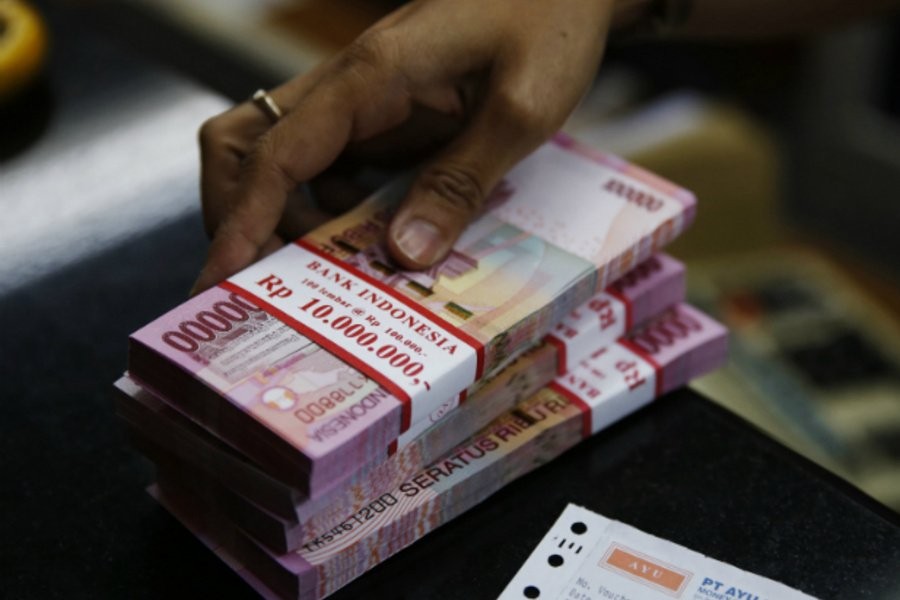
Timothy Chan Ying Jie and Lim Jia En
Published :
Updated :

The Asian Financial Crisis (AFC) represents a turning point for the East Asian economies that have enjoyed the booming decades of the 1980s and 1990s. A combination of economic events, policies and business cycles created conditions ripe for a financial bubble that culminated in an implosion destabilising the region's financial markets. Most scholars agree that the crisis was precipitated by Thailand's property asset bubble which caused a domino effect of financial panic in the region.
While the conditions that sow the crisis remained debatable, Jomo and Lane both point towards crony capitalism, financial liberalisation and domestic monetary policies in their 1999 studies, here, we analyse one event that precipitated the collapse of the Thai baht - the Federal Reserve raising interest rates. Many East Asian currencies were pegged to the US dollar. Its subsequent appreciation made it expensive for their central banks to buy dollars to maintain the peg.
Our analysis focuses on the role of the US dollar in maintaining stability and exacerbating instability. Why is the dollar's appreciation such a destabilising force on the afflicted Asian currencies? A concept we follow is the idea of the 'money view', coined by Perry Mehrling. The money view concerns itself with the cash flows that follow economic activities. For instance, a liability must be paid for with assets, either now or credited for the future. When the promise is kept and the liability is paid, it is considered settled.
It is this 'survival constraint' of cash flow match that disciplines economic actors' credit. To expand on this, the money view utilises a hierarchy of money, where some forms of money are easier to "settle" a debt with. For example, bank deposits in the form of currency can be used to instantly settle debts as it is universally accepted and is closest to central bank reserves (because who wouldn't accept cold hard cash?). On the other hand, securities are a form of credit as it only promises to pay a currency sometime in the future, given that it delays settlement.
The hierarchy of money is the key theme here that informs our analysis of the AFC on the macro-level. In international money markets, Perry Mehrling's money view defines an exchange rate as the "price of money in terms of another money". By contrast, the conventional economics view and the finance view would view exchange rate through the lenses of tradable goods and tradable financial assets respectively.
Under Perry Mehrling's money view definition of relative price, the United States dollar rests at the top of the hierarchy for world currencies. Table-1 illustrates this point, to the extent where USD-linked currencies comprised 65 per cent of the world economy (GDP) in the year 2000 alone. This hierarchy is reinforced by high-demand for the dollar and dollar-denominated assets which extend the survival constraint in the global financial system.

In the money view, the key to the functioning financial payment system is the central bank's daily expansion and contraction of the balance sheet - with the express purpose of regulating liquidity. This further serves as a means of providing elasticity or discipline. To elucidate, central banks perform open market operations as a way to enforce discipline by setting interest rates. Lower interest rates relax market discipline, making the availability of credit cheaper and a lower exchange rate; the inverse happens when interest rates are raised.
Under the money view narrative, capital liberalisation in the 1990s by Asian countries prompted capital inflows as elasticity relaxed discipline. This prompted credit booms in domestic economies, creating a Minskyian financial cycle of speculation and increasing debt levels as economic actors took excessive risks. Short-term debt funded long-term asset price inflation. Countries pegged to the dollar used their exports to generate trade surpluses to cover their financial account deficit from the capital flows, and to maintain their foreign exchange reserves in the peg. The demand for dollars flowed until it became too expensive from the Fed's raising interest rates. As a result, this sudden discipline contracted liquidity as noted by Bosworth's 1998 study on the Asian financial Crisis, prompting a liquidity crisis as investors ran on the currency, and by extension disrupting the valuation of vulnerable Asian currencies like the Thai baht.
The dollar's appreciation and the baht's depreciation created a contagion effect as the region's exports - with which to fuel financial account deficits due to capital inflows by maintaining current account surplus - are rendered uncompetitive, creating a currency crisis. What happened next was a domino collapsing, as Thailand's fellow tiger economies faced similar speculative attacks and drawdowns in their economies.
The AFC and the Global Financial Crisis, showed how crises unveil the hierarchy of money globally, illustrating the dollar's hierarchy. Aizenman documented the importance of the US dollar's role in providing liquidity during a crisis, where the Fed subsequently extended dollar swap lines for foreign currencies to central banks to solve the liquidity issue in the GFC and during the Covid shock.
Timothy Chan Ying Jie and Lim Jia En are Economics Undergraduate Students at University of Nottingham Malaysia. seytc1@nottingham.edu.my]


 For all latest news, follow The Financial Express Google News channel.
For all latest news, follow The Financial Express Google News channel.